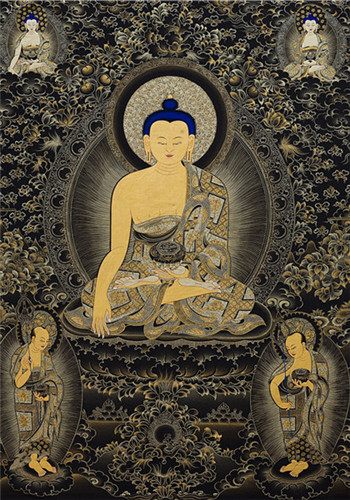
Kelsang Dawa shows his thangka collection at his painting center in Shangri-La, Yunnan province. The Tibetan art genre is energy-intensive-sometimes it takes years to finish one piece.( WANG KAIHAO/CHINA DAILY)
In January 2014, most of Dukezong was destroyed by fire, hundreds of the workshop's works and collections being lost.
Fortunately, some of the most precious ones were out for exhibition at the time. He later opened an art gallery in the 798 Art Zone of Beijing, but he returned to Shangri-La to continue his devotions this year and plans to close the gallery in 798 because, he says, the rent is too high and the area is too noisy.
Kelsang Dawa first came to Shangri-La in 2007, and he was sorry to see that the passing on of thangka art there had long since vanished.
"I found there were many fine ancient thangka pieces being housed in monasteries here, but few people could draw new ones."
So he decided to nurture thangka in Shangri-La again by setting up the painting center.
According to his studies, traditional thangka in Shangri-La do not have colors as strong as those of Rebgong, and reveal some artistic style of other ethnic groups in Yunnan such as Naxi.
Though Rebgong Thangka was inscribed in China's first national list of intangible cultural heritages in 2006, and went onto the UNESCO list in 2009, Kelsang Dawa does not want to directly transplant his hometown genre to Shangri-La. He expects to resume traditional local styles in Shangri-La.
The principles of tradition are strongly adhered to. All pigments are made from rocks, and painters use their saliva as toner.


















































